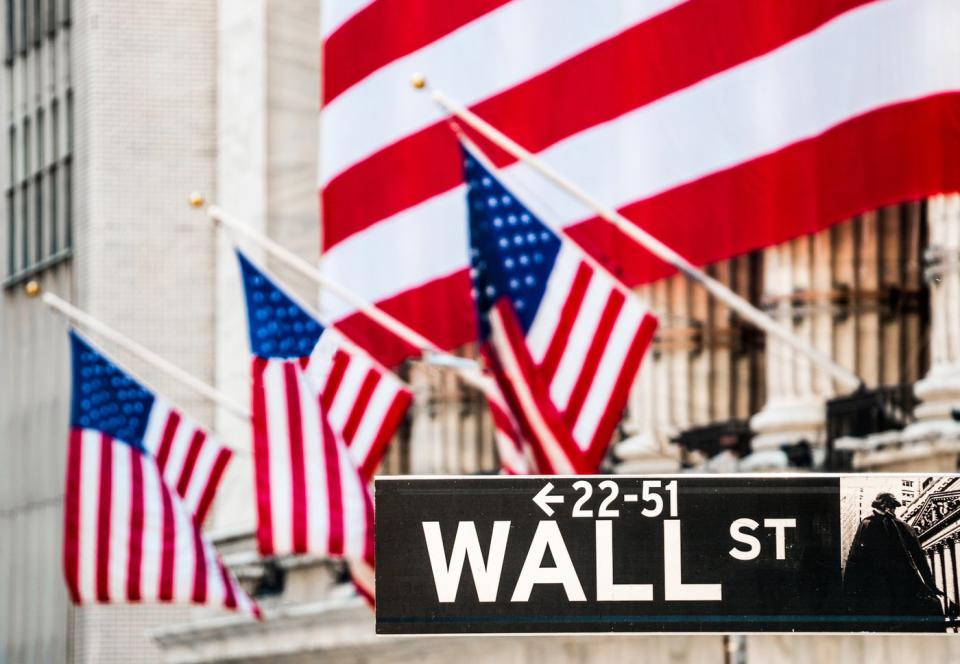For the last 128 years, the iconic Dow Jones Industrial Average (DJINDICES: ^DJI) has served as a guide to help investors gauge the health of the U.S. stock market.
At its inception in May 1896, the Dow Jones was composed of 12 companies that, not surprisingly, were prominently tied to the industrial sector. But following more than 50 changes to this ageless index over the years, it comprises 30 diverse multinational and time-tested businesses.
While most Dow stocks are respective leaders within their industries and have proven their worth to investors over the long run, not all 30 components are created equally. For patient investors with a long-term mindset, three Dow stocks are, through a combination of competitive advantages and price dislocations, ideally positioned to double your money by 2030.
Visa
The first time-tested Dow stock with all the tools necessary to double your money over the next six years is world-leading payment processor Visa (NYSE: V).
The biggest headwind Visa is liable to contend with between now and 2030 is the likelihood of a U.S. or global recession taking shape. When economic growth slows or contracts, it's normal for consumers and businesses to reduce spending. That's bad news for a company that generates revenue from transaction fees.
The flip side to this concern is that U.S. recessions have historically been short-lived. All 12 U.S. recessions since World War II ended in September 1945 have been resolved within two to 18 months. Comparatively, most economic expansions have endured for multiple years. Over time, consumer and business spending is expanding, which undeniably favors Visa's core payment-processing operations.
Visa has an impressive international runway as well. Excluding currency movements, cross-border payment volume is growing by the low- to mid-teens on a consistent basis. This is reflective of rapidly growing emerging markets being chronically underbanked. Visa has the deep pockets and abundant operating cash flow to push into these markets organically or via acquisition.
Another saving grace for Visa has been its management team's purposeful avoidance of lending activities. If Visa were to step into the lending arena, it would likely be wildly successful. However, lenders are directly exposed to loan losses and credit delinquencies during periods of economic uncertainty. Since it's not a lender, Visa doesn't have to set aside precious capital for potential loan losses and delinquencies. This is a subtle but foundational advantage for the company.
If Visa can sustain a low- to mid-double-digit earnings growth rate, a triple-digit return for patient shareholders come 2030 is very much in sight.
Walt Disney
A second sensational Dow stock that has the needed catalysts in its sails to deliver a 100% or greater return for long-term investors by 2030 is media juggernaut Walt Disney (NYSE: DIS).
Disney has dealt with a challenging start to the decade. The COVID-19 pandemic wreaked havoc on both its theme parks and studio segment, while its focus on building out its streaming content, including Disney+, resulted in steep losses. Legacy media companies have discovered that emulating Netflix on the streaming front is easier said than done.
However, these headwinds have begun to subside, giving way to Walt Disney's numerous competitive advantages.
Perhaps the biggest story of 2024 is that Disney delivered a surprise operating profit for its streaming segment a full quarter ahead of schedule. A combination of mindful cost-cutting and the ability to raise prices on all streaming tiers has helped Walt Disney turn steep initial losses for its direct-to-consumer (DTC) segment into an operating profit. Look for the company's broad content library and pricing power to fuel meaningful bottom-line growth from this DTC segment moving forward.
Another key selling point for Walt Disney is its branding. Consumers have plenty of options when it comes to the theme parks they visit and the movies they watch. However, no media company comes close to the depth of characters and storytelling that Disney brings to the table. Whether you're five years old or 85, Disney's vast array of products and services has a way to connect and engage with you. Being irreplaceable is a trait investors will pay a premium for on Wal Street.
Investors should also be able to take advantage of the price dislocation caused by the COVID-19 pandemic and what were short-lived hefty losses tied to its DTC segment. After reporting $3.76 in earnings per share (EPS) in fiscal 2023 (Disney's fiscal year usually ends in late September), EPS is forecast to easily top $6 in fiscal 2027. Annualized double-digit EPS growth can lift this media giant to $180 per share (or beyond) by 2030.
Intel
The third time-tested Dow stock with the puzzle pieces in place to double your money by 2030 but will certainly require patience from investors is semiconductor stalwart Intel (NASDAQ: INTC).
Intel has been clobbered by myriad issues, including Advanced Micro Devices siphoning away some of its central processing unit (CPU) market share for personal computers (PCs) and traditional data centers. Nvidia has also blown it out of the proverbial water with its H100 graphics processing units (GPUs), which are the preferred choice for businesses operating high-compute data centers.
Additionally, Intel is in the process of building out its Foundry Services segment from the ground up. Its ambitions to become the world's No. 2 foundry by the end of the decade are ambitious but extremely costly. The more money it pours into building out this much-needed infrastructure, the more painful it's been for Intel's bottom line.
These headwinds Intel is contending with won't turn on a dime. But there is a light at the end of the tunnel for long-term-minded investors.
For instance, Intel's legacy operations are still generating plenty of operating cash flow. Even after losing some CPU share to AMD, Intel remains the undisputed leader in PC CPU share. While this won't be the fastest-growing segment going forward, it should provide healthy cash flow that Intel can put to work in higher-growth initiatives.
Intel is also launching its Gaudi 3 artificial intelligence (AI)-accelerating chip, which gives it an opportunity to grab share back from Nvidia. Even though Nvidia's GPUs are liable to remain superior when it comes to computing capacity, Intel's markedly cheaper chips should help it stand out in an environment where enterprise demand for AI GPUs is overwhelming supply.
With Intel's stock trading at its lowest price-to-book value in at least four decades -- currently 28% below book value -- this price dislocation can no longer be ignored by opportunistic investors.
Should you invest $1,000 in Visa right now?
Before you buy stock in Visa, consider this:
The Motley Fool Stock Advisor analyst team just identified what they believe are the 10 best stocks for investors to buy now… and Visa wasn’t one of them. The 10 stocks that made the cut could produce monster returns in the coming years.
Consider when Nvidia made this list on April 15, 2005... if you invested $1,000 at the time of our recommendation, you’d have $650,810!*
Stock Advisor provides investors with an easy-to-follow blueprint for success, including guidance on building a portfolio, regular updates from analysts, and two new stock picks each month. The Stock Advisor service has more than quadrupled the return of S&P 500 since 2002*.
*Stock Advisor returns as of September 3, 2024
Sean Williams has positions in Intel and Visa. The Motley Fool has positions in and recommends Advanced Micro Devices, Netflix, Nvidia, Visa, and Walt Disney. The Motley Fool recommends Intel and recommends the following options: short November 2024 $24 calls on Intel. The Motley Fool has a disclosure policy.
Prediction: 3 Time-Tested Dow Stocks That Can Double Your Money by 2030 was originally published by The Motley Fool

